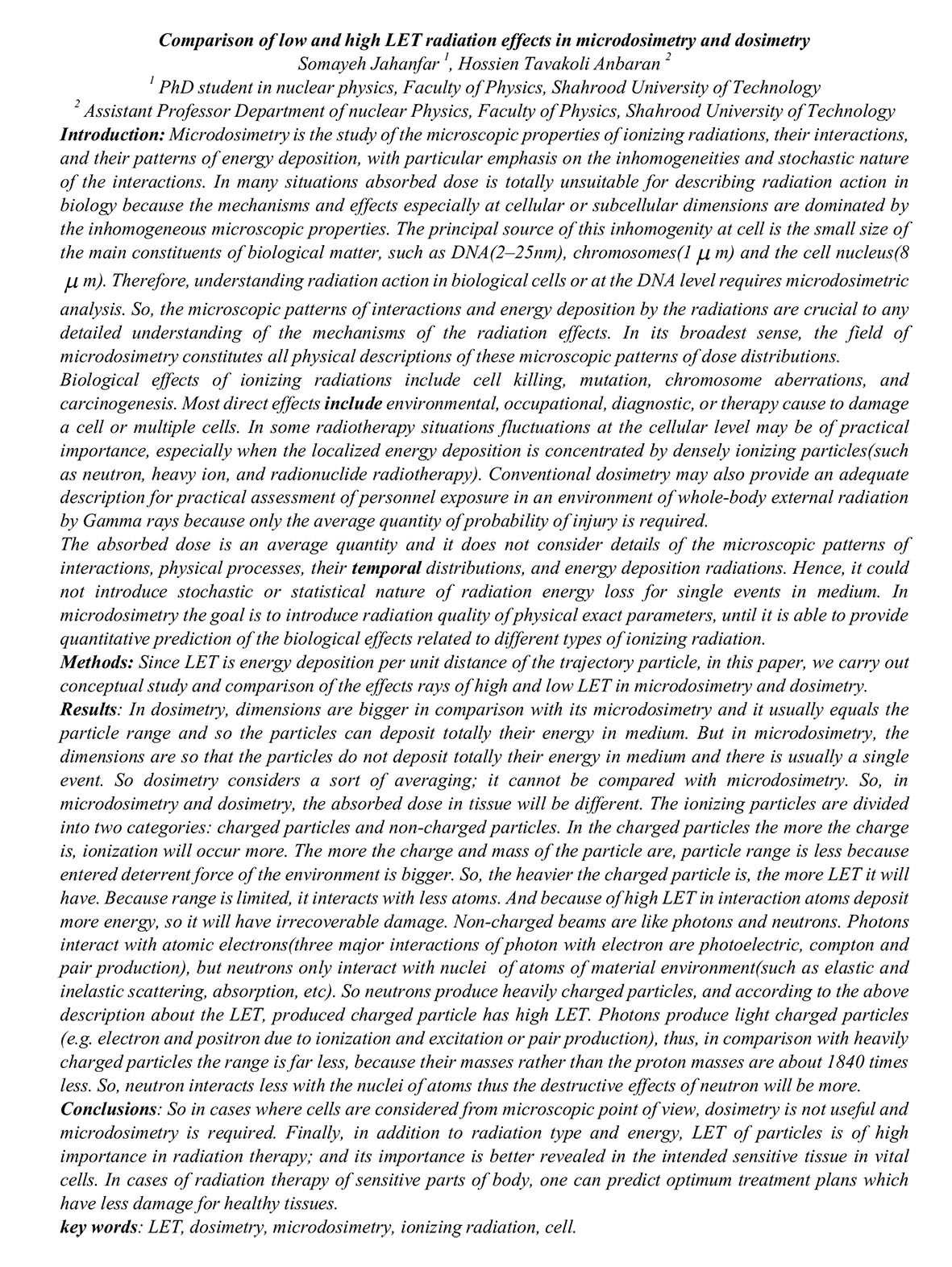The Comparison of the shares of stopping power in a soft tissue-equivalent material
- 17/آبان/1402
- مقالات کنفرانسی انگلیسی
- نویسنده : آزمایشگاه میکرودزیمتری نوترون
- 13 بازدید
- 0 نظر

Introduction:
Proton therapy is a type of radiation treatment that it uses protons to treat cancer. Because
of the protons’ unique ability to distribute the radiation dose more directly to the tumor, it
minimizes the damage to nearby healthy tissues. The rate of energy loss by the ion in the
target is called stopping power. The total stopping power is sum nuclear and electronic
stopping power. Electronic stopping power refers to the slowing down of a projectile ion due
to the inelastic collisions between bound electrons in the medium and the ion moving
through it. Nuclear stopping power refers to the elastic collisions between the projectile ion
and atoms in the target.
Materials and Methods:
It should be noted that soft tissue-equivalent material denotes a substance, with absorbing
and scattering properties for a given radiation that sufficiently match those of a certain
biological tissue. The soft tissue-equivalent material usually consist of four elements of
hydrogen, oxygen, carbon and nitrogen. By using the SRIM code, we calculated the total
stopping power in each element for 10-MeV proton beam. Then, using Bragg's rule, we got
the total stopping power for these elements. Also, using the same code, we obtained the total
stopping power for the compound. Also, we obtained the contribution of nuclear and
electronic stopping power to the total stopping power in this material.
Results:
By comparing, we observed that the peak height of stopping power using Bragg's rule is more
than 20% higher than the SRIM code. This is due to the core and bond (CAB) corrections at
low energies in the SRIM code. Also, We observed that total stopping power is due to the
electronic stopping power in high energies. By reducing energy, the electronic stopping
power is slowly reduced, and the share of nuclear stopping power slowly increases, and the
intersection of these is at 50eV energy. Then the contribution of the nuclear stopping power
is greater. Conclusion:
The proton therapy to treat cancerous tumors is a major technological advance. In low-
energies CAB corrections must be taken into account for stopping power of the compound,
and therefore, the peak height of the stopping power is reduced. In soft tissue equivalent
material for proton beam the contribution of the nuclear stopping power at energies of less
than 50 eV is greater than the electronic stopping power. In other energies, the electron-
stopping power share is dominant.



نظرات یک دیدگاه جدید ارسال کنید.
برای ثبت نظر ابتدا باید وارد سایت شوید !